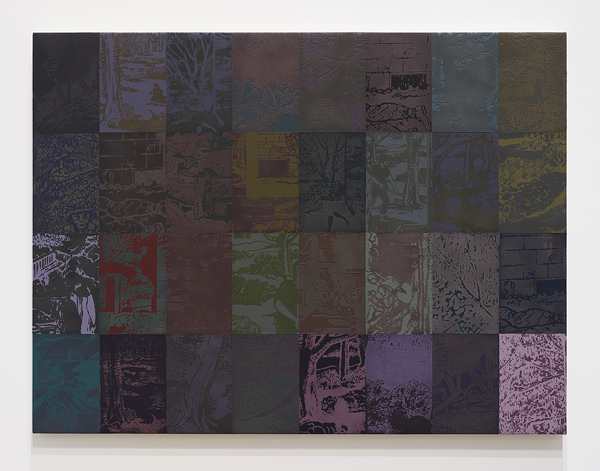It is not uncommon for an artist to begin with images from a personal archive amassed over time and use these fragments as a range of raw material. Anthony Giannini’s mixed media paintings are all about recontextualization. He draws from a wide range of sources (military field manuals, prayer rugs and online headline news photos) and thinks about each appropriated element as a small slice of the overwhelming amount of information available in today’s image saturated world.
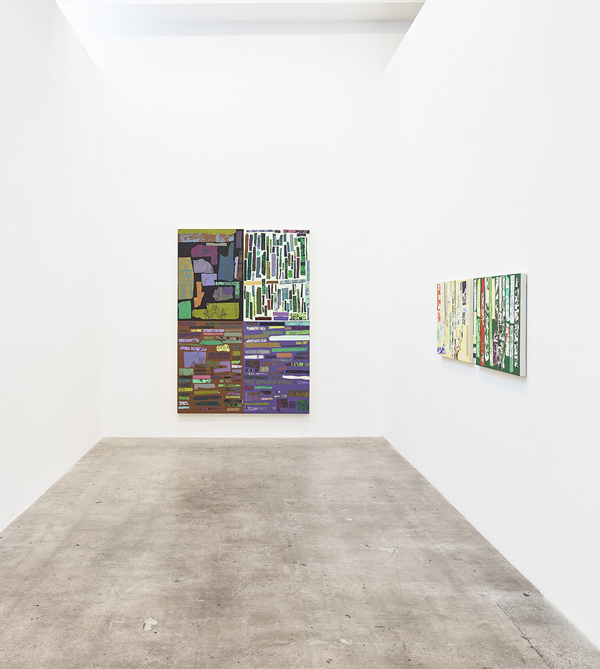
Anthony Giannini, “Mess Head.” Installation view. Courtesy of the artist and Diane Rosenstein.
In his exhibition “Mess Head,” he presents selections from three interrelated series, “Grid,” “Remnant” and “Table Top Still Life.” In each he screens bits from disparate sources onto fields of solid color to make paintings that call to mind Gerhard Richter’s color charts, the silk screens of Robert Rauschenberg and Andy Warhol, as well as early color works by Adam Pendleton.
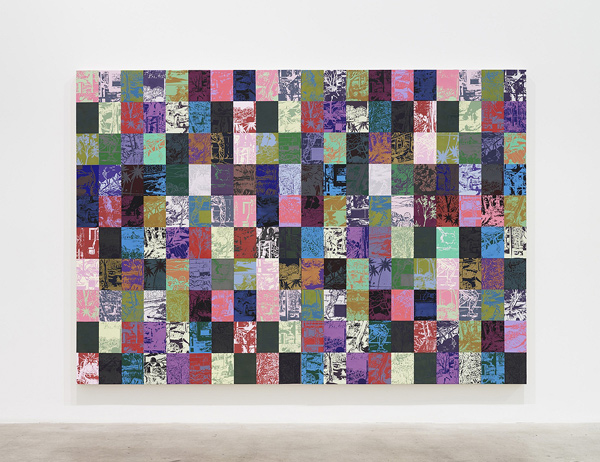
Anthony Giannini, Figure In A Landscape (View From The Window), 2018. Courtesy of the artist and Diane Rosenstein.
Within each composition Giannini uses pattern and repetition to create a rhythm that oscillates between abstraction (color) and representation. Figure In A Landscape (View From The Window) (all works 2018) is large painting comprised of a ten by twenty grid of cropped images depicting fragments from pictures of nature, architecture and the news. While some of the images and colors repeat, no combination is the same. Looking closely through the grid, it is possible to trace a fragmentary narrative—a soldier moves through a landscape, but it is hard to decipher why and where. The overall take-away from the work is a dizzying array of rectangles, each its own window on the world.
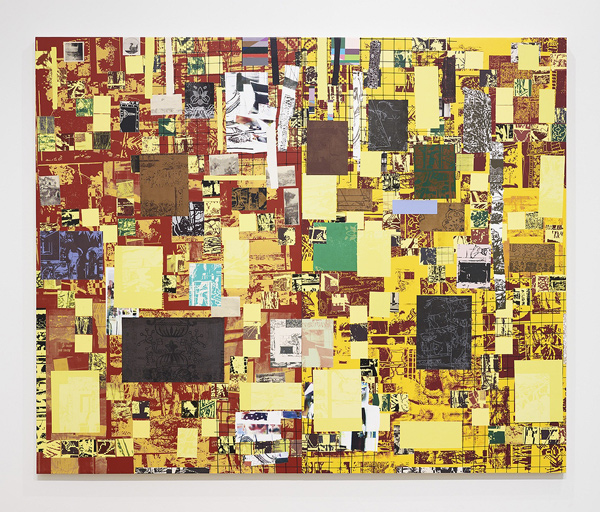
Anthony Giannini, Table Top Still Life (Residuum 3), 2018. Courtesy of the artist and Diane Rosenstein.
Both Table Top Still Life (Residuum 3) and Table Top Still Life (Residuum 2) also read as colorful abstractions. In reality they are reproductions of the seemingly casual, but actually specifically arranged, ephemera layered on a table in Giannini’s studio. To create these pieces the artist photographed different arrangements and screened them as overlapping rectangles onto pre-determined patches of color.
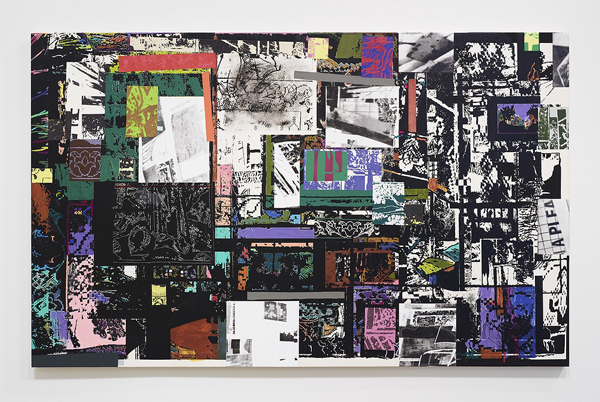
Anthony Giannini, Table Top Still Life (Residuum 2), 2018. Courtesy of the artist and Diane Rosenstein.
The layered surfaces become archaeological excavations where the site of exploration is the “stuff” of contemporary life. Though Giannini is an astute observer, he surprisingly chooses to obscure his political and social viewpoints, masking them in this array. Viewing Giannini’s complex works is both challenging and satisfying. They can be appreciated on a formal level, but for those who delve deeper, the rewards are far-reaching as Giannini makes conceptually sound and visually poetic sense of the bombardment of digital culture.
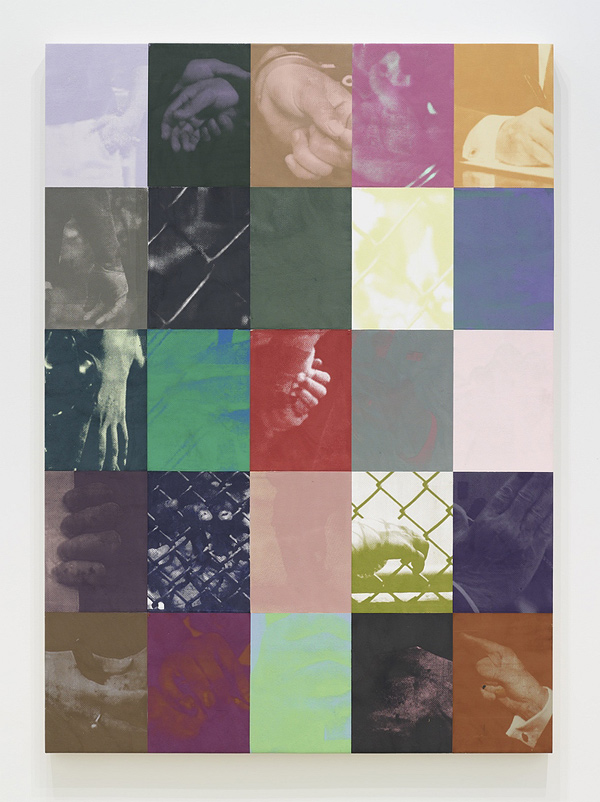
Anthony Giannini, Divide (2018). Courtesy of the artist and Diane Rosenstein.
Anthony Giannini, “Mess Head,” September 15 – October 27, 2018, Diane Rosenstein, 831 North Highland Avenue, Los Angeles, California 90038. dianerosenstein.com

